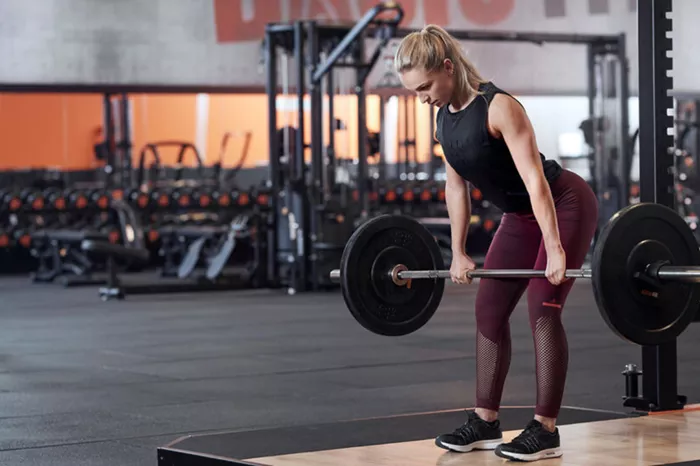The Barbell Bent-Over Row is a powerful strength training exercise. It targets the muscles in the upper back, shoulders, and arms. This move builds muscle mass and improves posture. It also enhances core stability. Because it involves lifting a weighted barbell, it is considered an anaerobic exercise. Proper form and technique are essential to avoid injury and maximize results.
Muscles Worked by the Barbell Bent-Over Row
This exercise mainly targets the latissimus dorsi muscles, also known as the lats. It also engages the rhomboids, trapezius, rear deltoids, and biceps. The lower back and core muscles help stabilize the body during the movement. Together, these muscles work to pull the barbell towards your torso.
Benefits of the Barbell Bent-Over Row
The Barbell Bent-Over Row offers many fitness benefits:
- Builds Upper Body Strength: It strengthens the back, shoulders, and arms.
- Improves Posture: Strengthening back muscles helps counteract poor posture from sitting.
- Enhances Core Stability: Your core works hard to keep your spine neutral.
- Boosts Anaerobic Power: It develops short bursts of strength and power, complementing anaerobic training.
- Supports Functional Movement: It mimics real-life pulling actions, improving overall functionality.
How to Perform the Barbell Bent-Over Row
Performing the Barbell Bent-Over Row with correct form is key. Follow these step-by-step instructions:
1. Setup
Stand with feet shoulder-width apart. Place the barbell on the floor in front of you. Bend at the hips while keeping your back straight. Grip the barbell with hands slightly wider than shoulder-width. Your palms should face down (overhand grip).
2. Body Position
Bend your knees slightly. Lean forward at the hips until your torso is nearly parallel to the floor. Keep your chest up and shoulders pulled back. Your head should be aligned with your spine.
3. The Row
Engage your core. Pull the barbell towards your lower chest or upper stomach. Focus on squeezing your shoulder blades together. Avoid using momentum or jerking the weight.
4. Lower the Barbell
Slowly lower the barbell back to the starting position. Maintain control and keep your back flat. Repeat for the desired number of repetitions.
Common Mistakes to Avoid
Many beginners make errors when doing this exercise. Avoid these common mistakes to stay safe:
- Rounding the Back: This can lead to injury. Always keep your spine neutral.
- Using Momentum: Swinging the bar reduces muscle engagement.
- Incorrect Grip: Too narrow or wide grip changes the focus of muscles worked.
- Not Engaging Core: A weak core puts stress on your lower back.
- Lifting Too Heavy: Start with lighter weights to master form.
Variations of the Barbell Bent-Over Row
To target muscles differently or adjust difficulty, you can try variations:
- Underhand Grip Row: Palms face up, emphasizing the biceps more.
- Single-Arm Dumbbell Row: Focuses on each side independently, improving balance.
- Chest-Supported Row: Performed on an incline bench to reduce lower back strain.
Integrating Barbell Bent-Over Row into Your Workout
The Barbell Bent-Over Row fits well in strength and conditioning programs. It pairs nicely with cardio workouts and anaerobic training for balanced fitness. For beginners, start with 3 sets of 8–12 reps. As you progress, increase the weight gradually. Include this exercise 2–3 times a week.
Safety Tips and Precautions
Since the exercise involves heavy weights and a bent-over position, safety is important:
- Warm up properly before starting.
- Use a weight you can control without losing form.
- If you have lower back pain or injuries, consult a professional.
- Consider using a lifting belt for extra back support when lifting heavy.
Equipment Needed for Barbell Bent-Over Row
To perform this exercise, you need a standard barbell and weight plates. A flat, stable floor is essential. Some gyms have specialized bars for easier grip. Using weightlifting gloves or chalk can improve grip and reduce slipping.
Barbell Bent-Over Row vs Other Rowing Exercises
Compared to other rowing exercises, the Barbell Bent-Over Row allows heavier weights and greater overall muscle activation. Machine rows or cable rows isolate muscles more but offer less core engagement. Dumbbell rows provide more freedom of movement but typically use lighter weights.
Tracking Progress and Results
To see improvements, track your weight lifted and reps completed. Keep a workout journal or use fitness apps. Aim for gradual increases in weight and consistent form. Monitor muscle growth and strength gains over weeks and months.
Conclusion
The Barbell Bent-Over Row is a cornerstone exercise for building a strong back and improving overall fitness. It requires focus on proper form to maximize benefits and prevent injury. When combined with other forms of anaerobic training at home or gym workouts, it supports a balanced and effective fitness routine. Start light, progress safely, and enjoy the strength gains this exercise offers.

